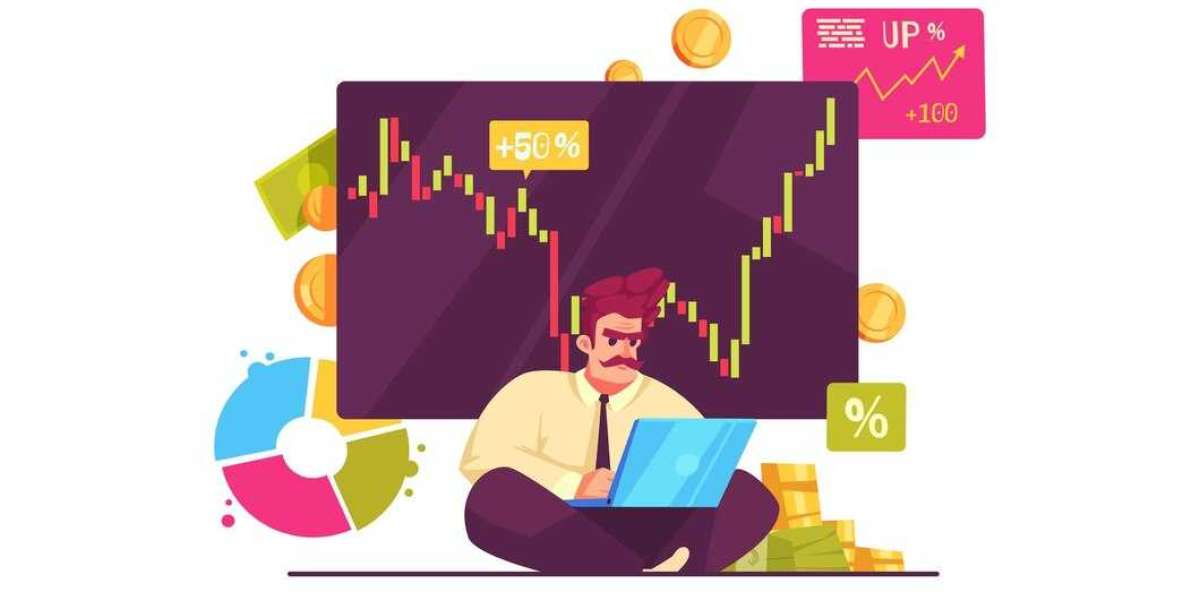Market Outlook:
The algorithm trading market is poised for significant growth in the coming years, driven by the increasing adoption of automated trading strategies and advancements in technology. According to a report by Market Research Future, the algorithm trading market size is projected to reach $44.4 billion by 2032, growing at a CAGR of 11.9% from 2023 to 2032.
The growing demand for efficient and cost-effective trading solutions, coupled with the need for improved trading performance and reduced execution costs, is fueling the adoption of algorithmic trading among institutional investors, hedge funds, and brokerage firms. As the market continues to evolve, we can expect to see further innovation and development in algorithmic trading strategies, particularly in the areas of artificial intelligence (AI) and machine learning.
Impact of COVID-19:
The COVID-19 pandemic has had a mixed impact on the algorithm trading market. On one hand, the increased market volatility and uncertainty caused by the pandemic have created opportunities for algorithmic trading strategies to capitalize on short-term price movements. Algorithmic trading systems are well-equipped to handle the high-speed, high-volume trading environment that has emerged during the pandemic, allowing them to react quickly to market changes and generate profits.
On the other hand, the economic downturn and market disruptions have led to a decline in trading volumes and increased risk aversion among investors, which has dampened demand for algorithm trading services. Some firms have had to adjust their trading strategies and risk management practices to adapt to the new market conditions.
Despite these challenges, the long-term outlook for the algorithm trading market remains positive. As the global economy recovers and market conditions stabilize, the demand for automated trading solutions is expected to rebound, driven by the continued need for efficient and cost-effective trading strategies.
Get a Sample PDF of the Report at:
https://www.marketresearchfuture.com/sample_request/8016
Major Market Players:
The algorithm trading market is dominated by a few key players, including:
- Automated Trading SoftTech (India)
- Tethys (US)
- Trading Technologies (US)
- Tata Consulting Services (India)
- Vela (US)
- Virtu Financial (US)
- Symphony Fintech (India)
- iRageCapital (India)
- Software AG (Germany)
- QuantCore Capital Manage
These companies are at the forefront of developing cutting-edge algorithmic trading strategies and technologies, leveraging advanced analytics, AI, and machine learning to gain a competitive edge in the market.
Market Segmentation:
The algorithm trading market can be segmented based on the type of trading strategy, end-user, and region.
By type of trading strategy, the market can be divided into:
- Momentum trading
- Mean reversion trading
- Statistical arbitrage
- High-frequency trading
- Market-making
- Other strategies
By end-user, the market can be segmented into:
- Institutional investors
- Hedge funds
- Brokerage firms
- Retail investors
- Other end-users
By region, the market can be categorized into:
- North America
- Europe
- Asia Pacific
- Latin America
- Middle East and Africa
Top Impacting Factors:
Several factors are driving the growth of the algorithm trading market, including:
- Increasing adoption of algorithmic trading strategies by institutional investors and hedge funds to improve trading efficiency and reduce costs.
- Advancements in technology, such as artificial intelligence, machine learning, and big data analytics, enabling the development of more sophisticated trading algorithms.
- Rising demand for high-frequency trading services to capitalize on short-term market opportunities and arbitrage opportunities.
- Growing regulatory scrutiny and compliance requirements, leading to the adoption of algorithmic trading solutions to ensure compliance with market regulations.
- Market volatility and uncertainty, creating opportunities for algorithmic trading strategies to generate alpha and outperform traditional investment strategies.
Latest Industry News:
In a recent development, Citadel Securities, one of the leading players in the algorithm trading market, announced the launch of a new AI-powered trading platform that leverages machine learning algorithms to optimize trading performance and reduce execution costs. This move reflects the growing trend towards the use of artificial intelligence and machine learning in algorithmic trading to gain a competitive edge in the market.
Another notable industry news is the acquisition of Quantopian, a leading provider of algorithmic trading solutions, by Robinhood, the popular online brokerage platform. This acquisition is expected to enhance Robinhood's algorithmic trading capabilities and expand its offerings to its growing user base.
Furthermore, the increased focus on sustainability and environmental, social, and governance (ESG) factors in investment decisions has led to the development of algorithmic trading strategies that incorporate ESG considerations. This trend is likely to continue as investors and regulators place greater emphasis on responsible investing.
Browse In-depth Market Research Report:
https://www.marketresearchfuture.com/reports/algorithm-trading-market-8016
The algorithm trading market is poised for significant growth in the coming years, driven by the increasing adoption of automated trading strategies, advancements in technology, and the need for efficient and cost-effective trading solutions. As the market continues to evolve, we can expect to see further innovation and development in algorithmic trading strategies, particularly in the areas of AI and machine learning, as well as the incorporation of ESG factors into trading decisions.



![Sonia Bompastor - Football Legend [Player & Manager]](https://newcastleunitedfansclub.com/upload/photos/2024/07/2wOzN4ab6WPyqVNthhaL_30_ab522199e3289bc57ad5644a1259c5c0_image.png)